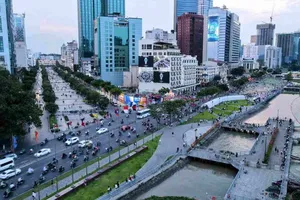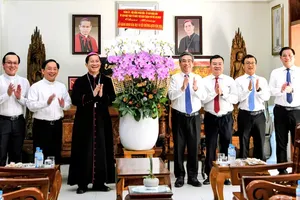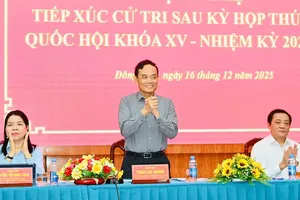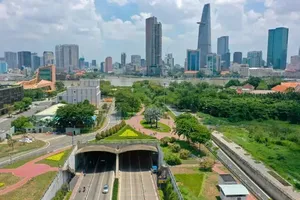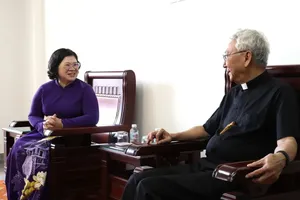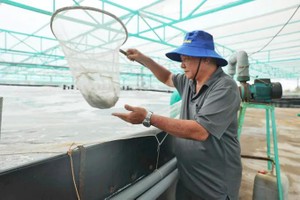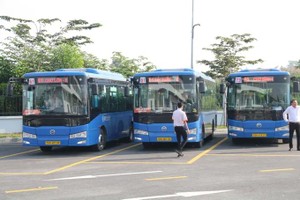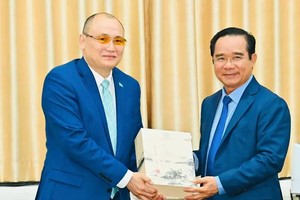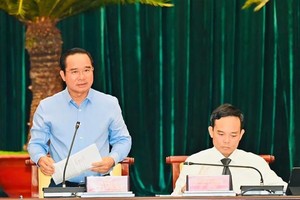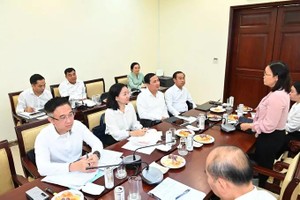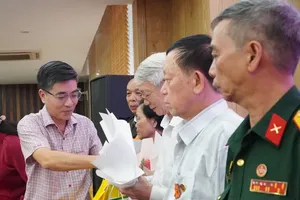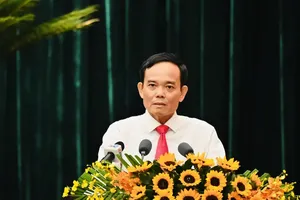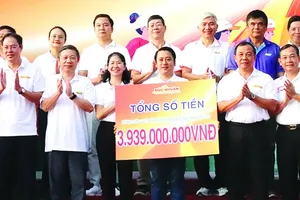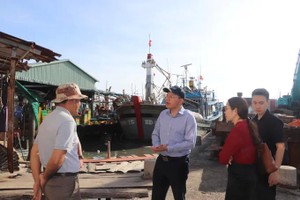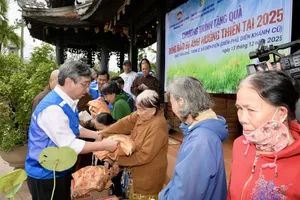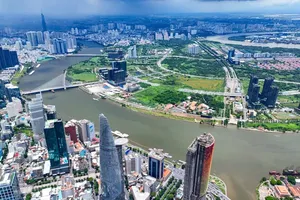The session focused on assessing the first half of 2025 and outlining key tasks and solutions for the remainder of the year. The meeting also marked the first official socioeconomic session under the new two-tier local governance structure.

The meeting was co-chaired by Mr. Nguyen Van Duoc, Member of the Party Central Committee, Deputy Secretary of the HCMC Party Committee, and Chairman of the HCMC People’s Committee, along with the city’s Vice Chairpersons.
Smooth operations in the first three days
According to leaders from Saigon Ward, the first three days of operations under the new system have gone smoothly. The ward promptly established administrative departments, affiliated public non-business units, and finalized personnel appointments.
The Saigon Ward Public Administration Service Center received 303 administrative dossiers—256 submitted in person and 47 online. A total of 311 cases were resolved, including carryover files from the former District 1.
The ward government has coordinated with local police, the military command, and neighborhood committees to ensure continuity of services and full coverage of public affairs.
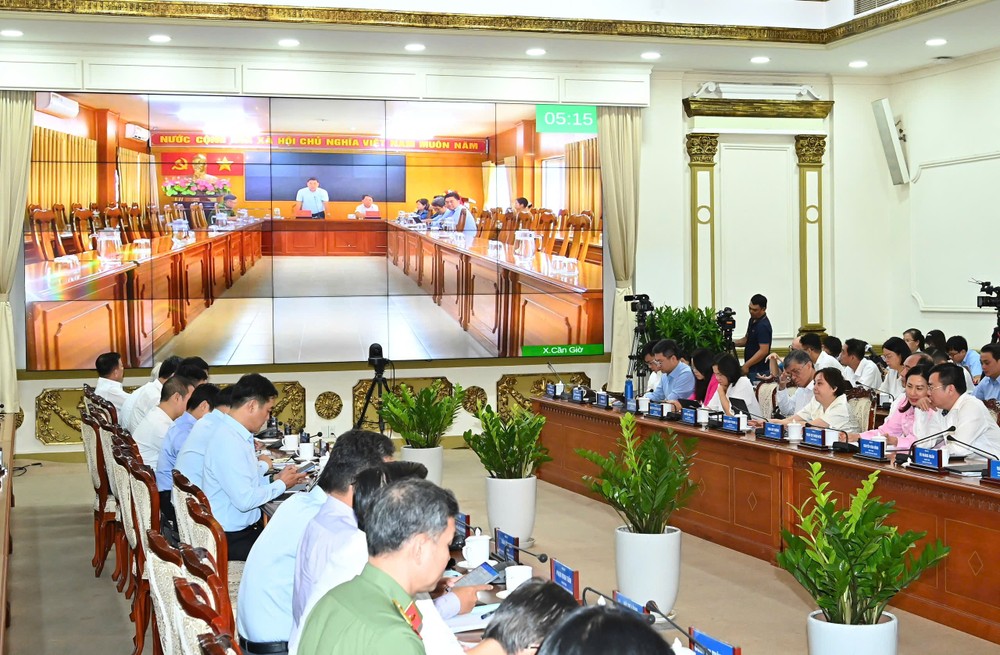
Officials noted positive initial feedback from residents and businesses. The ward pledged to maintain a listening attitude, remain receptive to constructive input, and continuously improve service quality.
Meanwhile, Mr. Le Anh Tu, Party Secretary of the Con Dao Special Administrative Zone, reported that the local government structure has largely been finalized. Over the past three days, the zone’s public administration center received 32 applications—mostly submitted in person—as the issuance of new digital signatures is still underway, limiting online submissions.
He also called for support from city departments, particularly in deploying doctors and medical professionals to Con Dao.
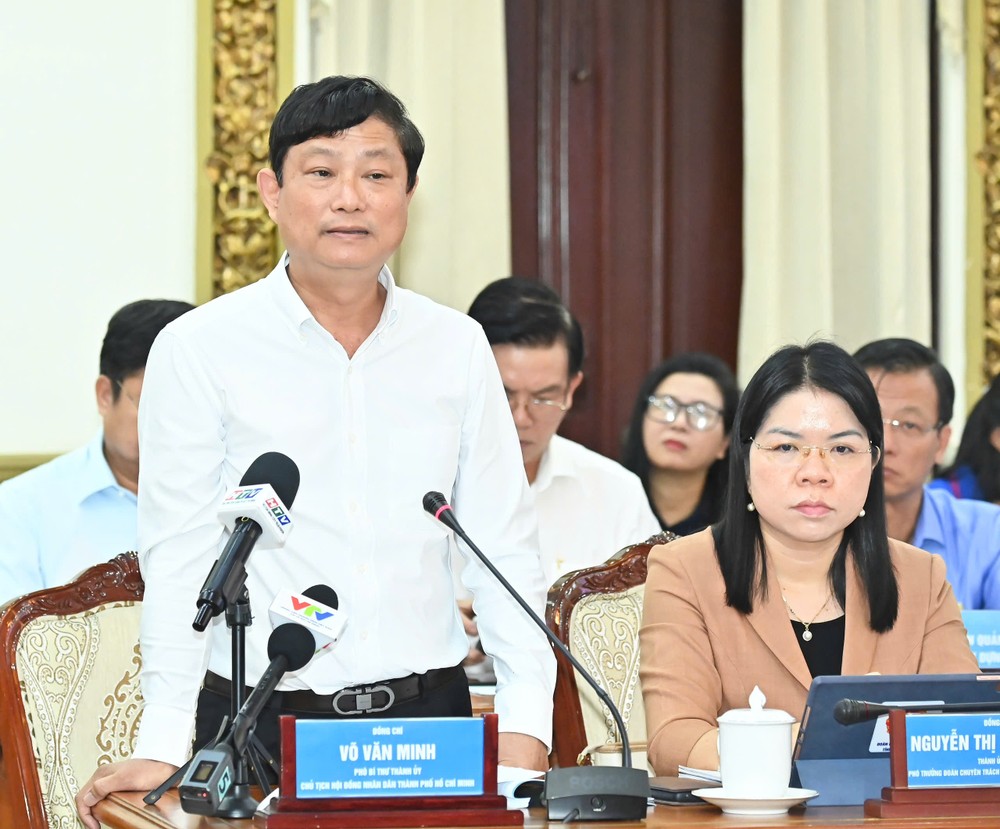
In Can Gio Commune, local authorities reported thorough preparations and stable implementation of two-tier local governance. Agencies are now operating smoothly, ensuring timely processing of administrative procedures. Residents have expressed optimism and trust in the newly merged administration.
Speaking at the session, Ms. Pham Thi Thanh Hien, Director of the HCMC Department of Home Affairs, said the city has focused on finalizing the new organizational structure in early July to align with the two-tierlocal governance model.
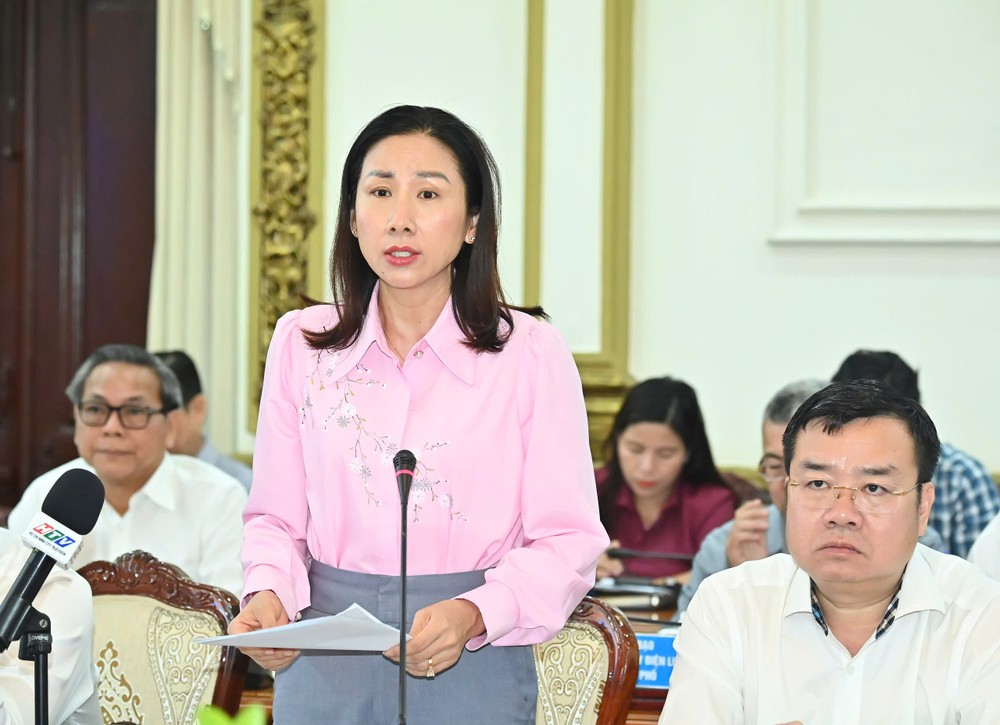
The department will advise the city government on supporting all 168 wards, communes, and the special administrative zone in deploying integrated IT systems—such as document management, the 1022 information portal, and administrative services.
Efforts are also being made to gather input from public officials—particularly regarding commuting challenges between administrative areas—so that personnel can be deployed in ways that match family situations, professional expertise, and organizational needs.
Ms. Vo Thi Trung Trinh, Director of the Digital Transformation Center, reported that in the past three days, the city received 60,277 administrative dossiers—17,744 online and 42,527 in person. Of these, 28,236 originated from grassroots-level administrations (10,186 online, 18,047 in person).
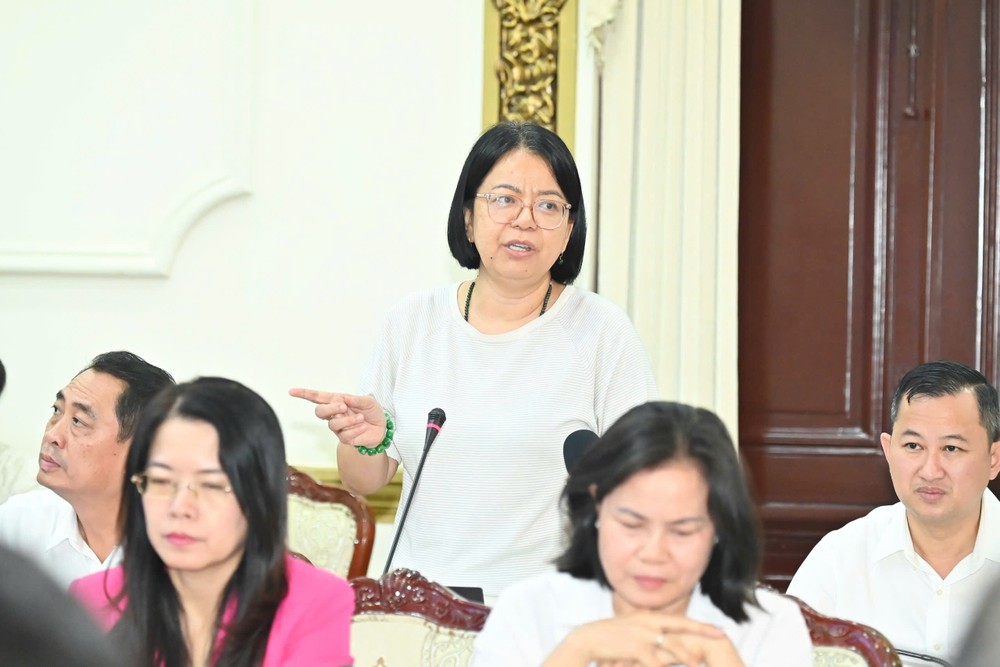
She noted that bandwidth is currently unrestricted, ensuring stable internet connectivity for local government operations. However, the primary challenge remains inadequate IT infrastructure at many grassroots-level units, which now requires a clear investment plan. Some national-level digital systems used for interagency processing are also operating inconsistently, affecting overall administrative efficiency.
The Digital Transformation Center has flagged difficulties with accessing citizen registry and business data, among other functions. The center is working with relevant ministries to improve performance and ensure seamless operations going forward.
Mr. Lam Dinh Thang, Director of the HCMC Department of Science and Technology, outlined ambitious goals for the second half of 2025: universal fiber-optic coverage for 100 percent of households; full 5G deployment in all high-demand zones; elimination of mobile signal black spots at the commune level; and maintaining broadband speed benchmarks in line with advanced economies.
Challenging growth targets for newly-formed HCMC
Aside from governance issues, delegates also addressed the city’s growth targets following the merger.
Mr. Nguyen Khac Hoang, Director of the HCMC Statistics Office, noted that international forecasts project Vietnam’s overall GDP growth to be 0.2 percent lower than initial estimates due to tariff policy changes.

According to Mr. Nguyen Khac Hoang, the newly formed HCMC now accounts for approximately 36.4 percent of national budget revenue and contributes about 25 percent of the country’s GDP. With that scale, a 1-percent increase in the city’s GDP is equivalent to around VND17.2 trillion—comparable to the entire economy of some smaller provinces.
The city posted a promising 7.49-percent growth in the first half of 2025. However, to meet the full-year target set by the Government and the People’s Council, HCMC must grow by at least 10 percent in the second half.
Public investment disbursement reached 32.9 percent in the first six months—a relatively strong performance—but sustaining this pace will be challenging. The city must now disburse over 11 percent of its capital budget each month to meet its targets.
The Consumer Price Index (CPI) rose 4.44 percent in the first half—its highest level in three years and near the National Assembly’s 5-percent threshold. This surge is squeezing consumer purchasing power and putting pressure on production and economic growth.
Although June saw the highest number of new business registrations since the beginning of the year, for every ten new businesses, nine withdrew from the market over the six-month period. This signals persistent barriers in the business environment and a pressing need for targeted reforms.
"Each locality within the newly merged HCMC must leverage its comparative advantages to formulate tailored growth strategies," Mr. Nguyen Khac Hoang emphasized. "Price stabilization is also crucial to prevent opportunistic price hikes under the guise of anti-counterfeit measures or new tax policies."
Sharing this view, Mr. Truong Minh Huy Vu, Director of the HCMC Institute for Development Studies, proposed fast-tracking infrastructure projects via a designated "green lane" mechanism. He also called for streamlining administrative procedures to ease market access and attract strategic investors to build mixed-use industrial zones capable of riding upcoming investment waves.
Mr. Truong Minh Huy Vu stressed the need to enhance social welfare and price stability to mitigate adverse effects from rising CPI.
On this front, Director of the Department of Industry and Trade Bui Ta Hoang Vu said the city will continue promoting its price stabilization programs and launch large-scale promotional campaigns in the second half of the year. Efforts will also focus on accelerating the development of major exhibition centers, engaging domestic and international investors, and supporting small and medium-sized enterprises in digital transformation, trade promotion, and participation in both local and international trade fairs.
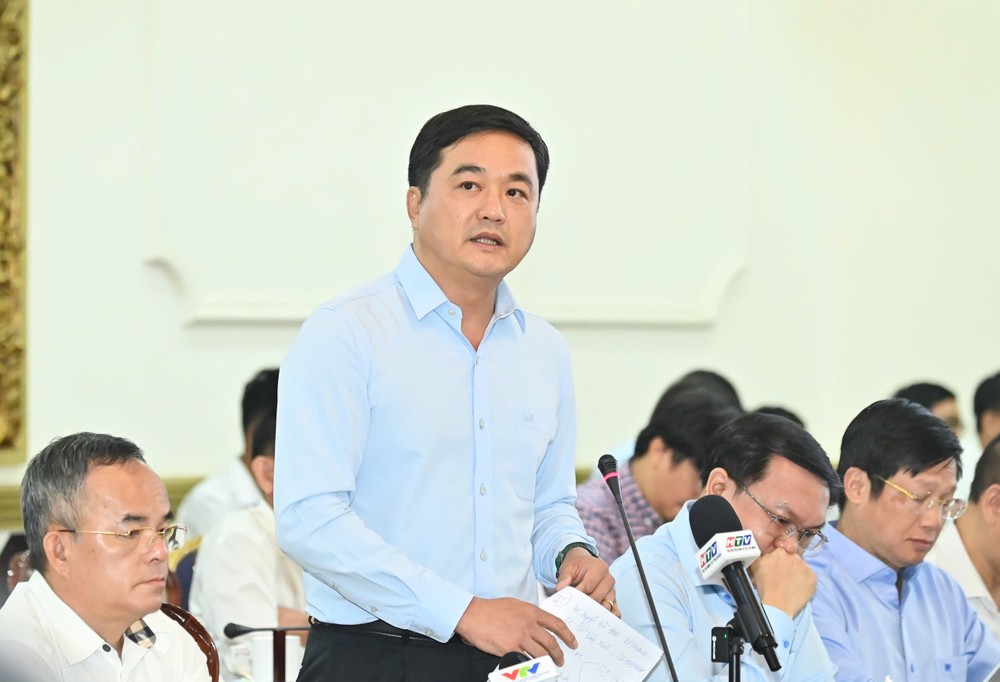
Regarding industrial development, Mr. Bui Ta Hoang Vu pointed out that with the industrial momentum of the former Binh Duong and Ba Ria–Vung Tau areas, the new HCMC now has 45,000 hectares of land earmarked for industrial expansion.
Lending clarity, Mr. Le Van Thinh, Head of the HCMC Export Processing and Industrial Zones Authority (HEPZA), revealed that a plan is underway to revamp five key zones—Tan Thuan, Tan Binh, Hiep Phuoc, Cat Lai, and Binh Chieu—by July. The goal is to introduce criteria that attract high-tech industries, boost productivity, and enhance added value.
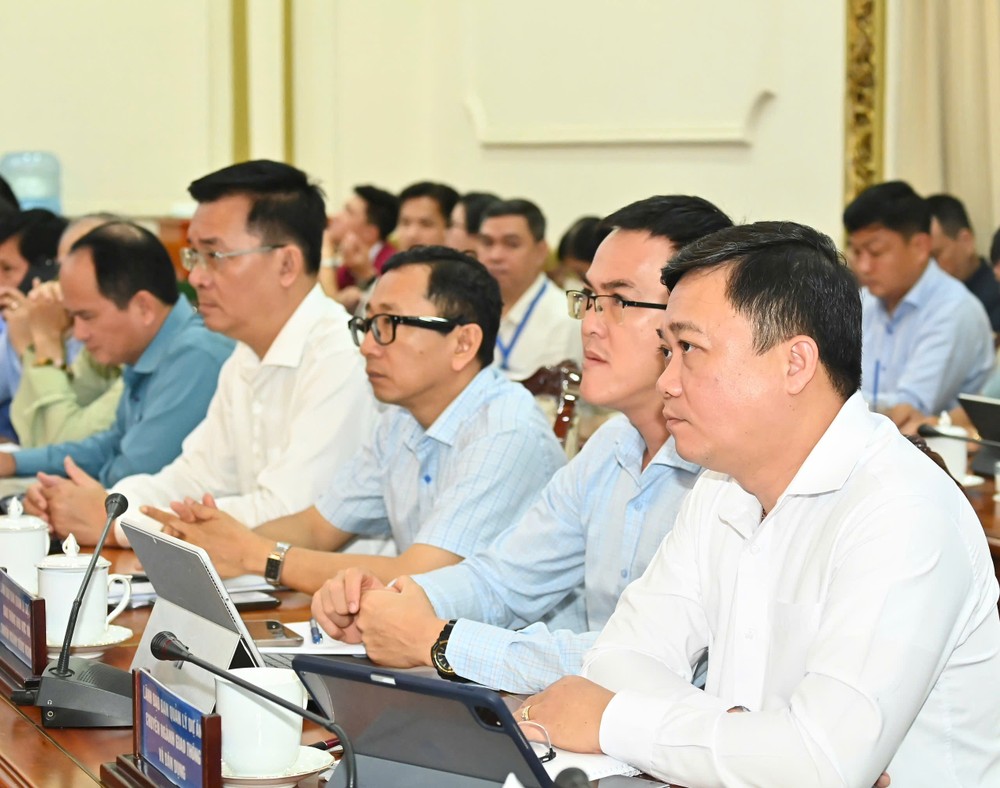
The management boards of industrial parks across the three former localities have also agreed on a unified development plan, proposing an additional 13,000–13,200 hectares of industrial land through 2030.
Vice Chairman Nguyen Van Dung of the HCMC People's Committee noted that 64 of the city’s 67 industrial zones are now operational, with Binh Duong accounting for half. He emphasized the need to reevaluate zoning and coordination for maximum efficiency.
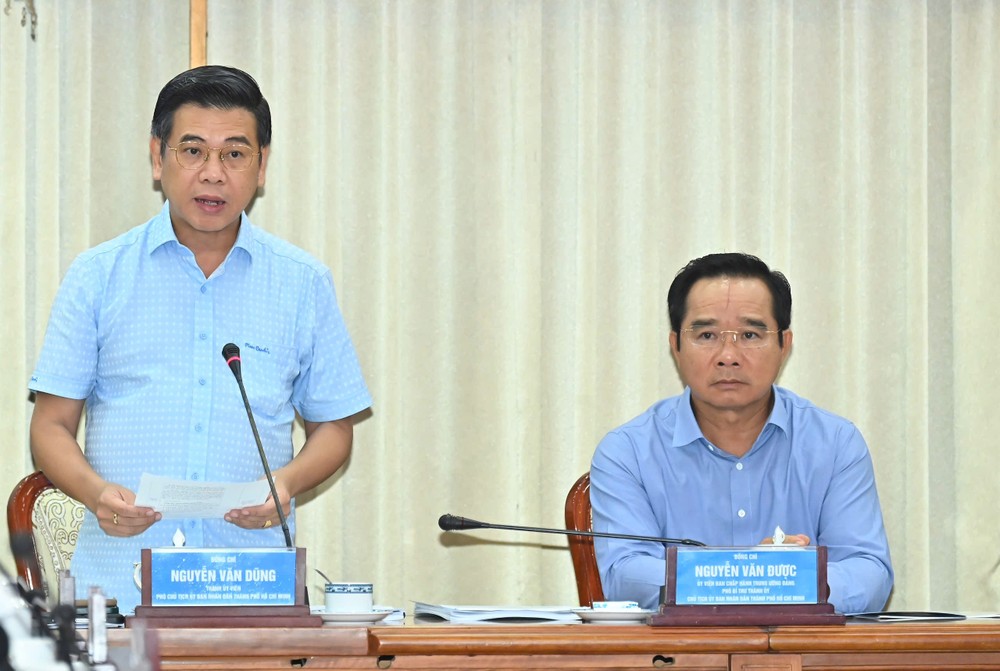
Representing the local business community, Mr. Nguyen Van Hung, Chairman of Becamex IDC, expressed strong confidence in the merger’s potential to unlock transformative growth. He highlighted Becamex’s key role in infrastructure development in Binh Duong and voiced hope that the new HCMC government would continue entrusting major tasks to capable enterprises like Becamex—given the significant resources the private sector can contribute to the city’s future breakthroughs.
